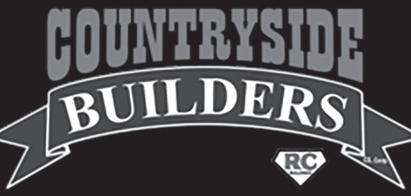






Page 2 Telegraph • Spring Home 2023
7 Things To Consider When buying a Shed page 3 Shedding Some Light on Solar page 3 What to Know About Landscape Lighting ....................... page 4 How to Make Homes Safer from Fire ............................... page 4 The Benefits of Energy-Efficient Homes ........................... page 5 Backyard Barbeque Essentials page 6 Signs a Home Exterior Needs Updating page 6 Create a Native Plant Garden........................................... page 7 Tips for Pet Proofing Your Home ...................................... page 7
Table of Contents
A plump robin sits in one of Alton’s blooming trees on Wednesday near the Alton riverfront. The blooming trees around the city are a sure sign of spring that can easily go unnoticed in the hustle and bustle of everyday life. Several birds could be seen using the trees for cover this week and bringing in scraps of material, cloth and twigs to strengthen their nests.
Photo by John Badman, The Telegraph
Backyard sheds can be useful assets. Sheds can create storage space in the garage, basement or other areas of the house that have become gathering spots for gear typically used outdoors. Sheds are ideal for housing mowers, tools and even poolcare equipment. But they can be put to other uses as well, such as being key spots to engage in hobbies or even as a child’s clubhouse.
Various factors should be considered before building or buying a shed. A storage shed can be a significant investment. Once placed, sheds may remain in their dedicated spots for years to come. That means careful thought should go into the planning process.
1. Check your local building codes first. Before you accumulate building materials or order a shed, be sure to know the ins and outs of shed codes. The codes may impact the shed’s placement, construction, the materials used, size, and numerous other factors. It’s much easier to amend plans beforehand than to face the hassle and expense after lear ning you did things incorrectly.

2. Choose placement wisely. Spend several days assessing the yard and thinking about the uses for the shed. If you plan to store pool floats and chemicals inside of the shed, it should be located close enough to the pool to be convenient. Look at the lay of the land. If there is a soggy patch of land that can tur n swampy under the shed’s foundation, that is a poor location choice. If you need access to electricity, placing it far away from the house could necessitate running expensive wiring.
3. Consider the design. Just because a shed is for storage doesn’t mean aesthetics should be overlooked. Choose a shed style that complements your home. You may also want to match certain architectural features, like arched doorways or dor mers. Design also may relate to practicality For instance, storing a riding mower inside may necessitate dual doors that open widely

4. Invest in quality materials. Spending a little more and using quality materials can ensure it lasts long enough to be cost-effective. The right materials will be resistant to splitting, cracking, decay, and insect damage.
5. Prepare the site well. A proper foundation for the shed is almost as important as the shed itself. You cannot just drop the shed on the lawn and leave it, as the shed can sink or structural issues may arise if it is placed on a weak base.
6. Blend into the environment. Surround the shed with shrubs or plants so that it blends into the yard and complements the space.
7. Deck out the interior Use every storage tool at your disposal to maximize floor, wall and even rafter space for storage. Plan where items will be kept and customize the storage options around those locations.
Sheds can be an asset and improve storage capability in the backyard.

OPTIONS TO FINANCE Home Improvements
Renovating a home is a great way to impart personality indoors and out. Improvements can make spaces more livable and address safety issues. Home renovations often take residents lifestyles into account, and changes can be customized to accommodate a growing family or an empty nest.
No matter the job, home improvements tend to be costly According to the financial resource SoFi, on average, the cost to renovate or remodel a whole house runs between $10 and $60 per square foot. Certain rooms demand a higher cost, with a kitchen or bathroom remodel costing around $100 to $250per square foot due to electrical and plumbing needs. Figuring out how to pay for the improvement project is as essential to the planning process as picking out materials and contractors.
The following are some financial considerations and financing options for homeowners looking to renovate their properties.
Consider if the investment is worth it. Remodeling magazine routinely assesses common improvements and how much homeowners can expect to recoup on the investment in its annual Cost v Value report. In 2022, a homeowner spending $4,000 on a garage door replacement recouped 93.3percent of the investment, whereas adding a midrange bathroom at $63,000would only offer a 51.8 percent retur n. Homeowners must decide if they wan to go forward with the project if they re likely to get just a $33,000 retur n when they choose to sell the home later on.
Refinance the home mortgage. Homeowners can use a cash-out mortgagere finance as a way to access thousands of dollars for a remodel. This taps int oa home s equity. Keep in mind that the mortgage will then be a new mortgage at the current interest rate and an outstanding balance higher than what was the current one. Typically 20 percent equity in the home is needed to refinance.
Take out a personal loan. For those who do not want to refinance, a personal loan or home improvement loan can be good for midsized projects,according to American Express. Personal loans for home renovations typically require no collateral and one s credit score deter mines the interest rate.
Utilize a home equity line of credit. A HELOC is a for m of revolving credit,like a credit card. Homeowners borrow against the credit line granted with the home being the collateral. As a person pays down what is owed, he or she can borrow more. This is a good idea for recurring or long-ter m home improvements.


Try a home equity loan. Home equity loans use the home as collateral like a HELOC. The home equity loan is an installment loan for a fixed amount on a fixed monthly schedule for a set ter m. These are sometimes called second mortgages.
No- or low-interest credit card. Smaller projects can be financed using credit cards. Many will offer introductory rates with no interest for a few months. This is generally only preferable if a person can pay off the balance before interest is charged.
These are the primary ways to finance home improvement projects when costs exceed available cash on hand.
Spring Home 2023 • Telegraph Page 3 u Featur ing Vinyl or LP Wood Smar t Siding u Many St yles, Sizes and Options Available • Lofted Barn • Utility & G arden Sheds • Dog Kennels • Chicken Coops • Cabins & More 618-466-6337 7107 Montclair, Godfrey, IL w w w.buildwithcountr yside.com SALE 10-15% OFF! Our Buildings on our Lot! SALE 10-15% OFF! Our Buildings on our Lot! Great Selection Of Por table Buildings!
7 THINGS to consider when buying a SHED
What to know about landscape lighting
Home improvement trends come and go, and one trend that has become wildly popular in recent years is recognizable in yards every night. Landscape lighting has transfor med how people see and enjoy their properties at night, making it one of the more sought-after upgrades among moder n homeowners.
Curb appeal is often seen through the lens of how homes appear during daylight hours, but landscape lighting can make homes look better and more moder n, and potentially safer, after the sun goes down. W ith such potential, landscape lighting is worth exploring for homeowners looking to upgrade their properties.
Are there different types of landscape lighting?
When considering landscape lighting, homeowners should know that there are various options to consider. According to the lighting experts at Lumens, spotlights project a concentrated and narrow beam of light that’s usually around 45 degrees. Spotlights are often chosen to highlight specific features on a property, like a component of the landscaping. Individuals who want to cast light over wider, more general areas may consider floodlights, which Lumens notes spread light up to 120 degrees.
Inground lighting is among the more sophisticated landscape lighting options. Lumens notes that inground lighting illuminates the whole of a tree or structure, often creating a dramatic look. These circle-shaped lights also are great at illuminating walkways and driveways.
Post lights are another outdoor lighting option, and these are often used to light up long walkways and pathways so it’s easier and
safer to navigate dark areas at night. Is landscape lighting a job a DIYer can handle?
Many homeowners consider a do-it-yourself approach when pondering a potential home renovation, and a landscape lighting project is likely to inspire such curiosity as well. The home experts at HGTV note that the feasibility of DIY in regard to a landscape lighting project depends on the type of lighting homeowners want to install and where they want to install it. Replacing an existing electrical fixture may be well within the skill of a seasoned DIYer, but installing a new fixture is a job best left to the professionals. Homeowners whose homes currently have no or very little landscape lighting are almost certainly better off working with a professional. Solar lighting that does not require any electrical work can be installed quickly and easily by anyone, but such options may not provide the look homeowners are aiming for
How much lighting is necessary?
The amount of lighting homeowners want to install is up to them. If the home currently has little or no landscape lighting, a consultation with a professional can help to deter mine how much lighting to install and where to install it. When discussing landscape lighting, homeowners may want to inquire about dimmers. Dimmers can increase or decrease lighting depending on the situation. For example, homeowners may want a little extra light during a party, but less when relaxing alone outside at night. Dimmers allow homeowners to adjust as necessary.
Landscape lighting is a popular home renovation trend. Homeowners considering adding landscape lighting to their property are urged to work with a skilled professional to devise and install a set-up that makes their homes more appealing at night.
How to make homes safer from fires
Over a five-year period beginning in 2015 and 2019, fire departments across the United States responded to roughly 347,000 home structure fires per year That data, courtesy of the National Fire Protection Association, underscores the significance of home fire protection measures.

Smoke detectors are a key component of fire protection, but there’s much more homeowners can do to protect themselves, their families, their belongings, and their homes from structure fires.

• Routinely inspect smoke detectors. Smoke detectors can only alert residents to a fire if they’re working properly. Batterypowered smoke detectors won’t work if the batteries die. Routine smoke detector check-ups can ensure the batteries still have juice and that the devices themselves are still functioning properly Test alar ms to make sure the devices are functioning and audible in nearby rooms. Install additional detectors as necessary so alar ms and war nings can be heard in every room of the house.
• Hire an electrician to audit your home. Electricians can inspect a home and identify any issues that could make the home more vulnerable to fires. Ask electricians to look over every part of the house, including attics and crawl spaces. Oft-overlooked areas like attics and crawl spaces pose a potentially significant fire safety threat, as data from the Federal Emergency Management Association (FEMA) indicates that 13 percent of electrical fires begin in such spaces.
• Audit the laundry room. The laundry room is another potential source of home structure fires. NFPA data indicates around 3 percent of home structure fires begin in laundry rooms each year. Strategies to reduce the risk of laundry room fires include leaving room for laundry to tumble in washers and dryers; routinely cleaning lint screens to avoid the buildup of dust, fiber and lint, which the NFPA notes are often the first items to ignite in fires linked to dryers; and ensuring the outlets washing machines and dryers are plugged into can handle the voltage such appliances require. It’s also a good idea to clean dryer exhaust vents and ducts every year.
• Look outward as well. Though the majority of home fires begin inside, the NFPA reports that 4 percent of such fires begin outside the home. Homeowners can reduce the risk of such fires by ensuring all items that utilize fire, including grills and firepits, are always used at least 10 feet away from the home. Never operate a grill beneath eaves, and do not use grills on decks. Never leave children unattended around firepits, as all it takes is a single mistake and a moment for a fire to become unwieldy
• Sweat the small stuff. Hair dryers, hair straighteners, scented candles, clothes irons, and holiday decorations are some additional home fire safety hazards. Never leave candles bur ning in empty rooms and make sure beauty and grooming items like dryers, straighteners and irons are unplugged and placed in a safe place to cool down when not in use.
Fire departments respond to hundreds of thousands of home fires each year Some simple strategies and preventive measures can greatly reduce the risk that a fire will overtake your home.
Page 4 Telegraph • Spring Home 2023
The benefits of energy-efficient homes
Consumer efforts to be more eco-conscious are more and more noticeable. For proof of that, one need look no further than the increase in vehicle charging stations. Such stations are more accessible than ever and illustrate that consumer preference is increasingly leaning toward products that leave as small a carbon footprint as possible.
Another indicator of a growing interest in eco-friendly products is the popularity in energy-efficient homes. In fact, a recent survey from the National Association of Home Builders found that energy-efficient features are among the most sought-after “must-haves” among homebuyers. Among those surveyed, 83 percent desired Energy Star-rated windows, 81 percent wanted Energy Star-rated appliances and 80 percent preferred energy-efficient lighting.

Though eco-conscious sensibilities compel millions of homeowners to make their homes more energy-efficient, that’s not the only reason to upgrade your home. The following are a handful of the many benefits of energy-efficient homes.
• Save money: Inflation was one of the

biggest stories of 2022, as the cost of living rose dramatically in the wake of world events. According to data from the U.S. Bureau of Labor Statistics, inflation led to an overall 6.5 percent increase in prices. But that increase was dwarfed by the cost of electricity, which increased by 14.3 percent in 2022. Energy-efficient appliances can help homeowners overcome that spike, as the U.S. Department of Energy indicates upgrading to such products can help homeowners reduce their energy costs by as much as 30 percent.
• Improve resale value: As the NAHB survey indicates, moder n homebuyers want energy-efficient homes. They’re also willing to pay more for such homes. Research from the mortgage lender Freddie Mac found that homes with energy-efficient ratings sold for nearly 3 percent more on average than homes without such ratings.
• Live healthier: The benefits of energy-efficient homes aren’t just economic, though health-related ben-
efits certainly produce an economic incentive as well. According to the American Council for an Energy-Efficient Economy, insulation and air sealing protect individuals from heat waves and other ripple effects of climate change. The ACEEE notes that weatherization can improve indoor air quality and comfort, a notable benefit for asthma sufferers and seniors. In fact, the ACEEE estimates that integrating energy efficiency programs in homes could reduce seniors’ risk for falls in their homes, potentially saving $2 billion in fall-related health care costs over the next decade, and improve asthma outcomes, which could reduce health care costs by as much as half a billion dollars.
Energy-efficient products and practices pay numerous dividends, making them a worthy expenditure for any homeowners looking to upgrade their homes.

Shedding some light on home solar
Consumers shopping around for home improvement projects may be leaning toward overhauls that can reduce energy consumption and save them money in the long run. This is a driving factor behind a growing number of homeowners investigating solar energy for their residences.
How does solar power work?
Solar power har nesses the sun’s energy and converts it into electricity that can be used in homes. Many people are familiar with photovoltaics (PV), which are the panels that absorb sunlight and create an electric field across their layers. Another solar technology, known as concentrating solar power, is primarily used in large power plants and is not appropriate for residential use, according to Energy.gov.
According to the Office of Energy Efficiency & Renewable Energy, hundreds of thousands of solar panels have been put in use across the United States since 2008
Costs associated with solar
The upfront expense of solar panels is significant, costing anywhere from $10,000 to $14,000 for initial installation. However, comparatively speaking, homeowners can spend $1,500 or more per year on electricity, so solar panels will pay for themselves over time. Keep
in mind that costs may vary depending on energy needs and how many panels will be required to service the system.
How much electricity can I expect?
The Federal Trade Commission’s Consumer Advice says that the amount of power generated from a solar energy system depends on a few factors:
1. The average number of hours of direct, unshaded sunlight your roof gets each year;
2. The pitch (angle), age and condition of your roof, and the compass direction it faces;
3. The size and strength of your system; and


4. Environmental factors such as snow, dust or shade that may cover the system.
Save even more money
Consumers can contact their utility companies to find out if they provide homeowners who produce solar power with “net metering.” This program pays the homeowner money or gives credit for excess power the system produces and retur ns to the electric grid. Individuals also may be eligible for energy tax credits or other benefits.
Homeowners may find it worthwhile to explore solar energy, particularly if they consume a high amount of electricity.
Spring Home 2023 • Telegraph Page 5 618-330-0117 Call Today EARLY BIRD SPECIAL $15.00 O ff Air Conditioner Clean & Check Ser vice must be per formed by 5/31/2023 w w w.k ingaircondheating.com
BACKYARD BARBECUE ESSENTIALS
Summer barbecue season has arrived, and this season may be an especially active one. Many summer barbecues were called off in 2020 as the world continued to confront the COVID-19 pandemic. But as the number of fully vaccinated adults rises across the United States and Canada, outdoor gatherings like backyard barbecues are much safer than they were a year ago. That bodes well for backyard barbecue enthusiasts who can’t wait to cook their favorite foods over an open flame. Since so many backyard gatherings were canceled last year, now may be a great time to revisit the essential components that make barbecues such a beloved summertime tradition.
• Fur niture: In early spring, fully vaccinated individuals were given the go-ahead to gather mask-free with fully vaccinated people from other households. That was a relief for people who are itching to spend time with family and friends after more than a year apart. If you’re planning to host a backyard barbecue this summer, inspect your outdoor fur niture for wear and tear, especially if you did not bother to take it out of the garage last summer A thorough cleaning might be in order. Many outdoor fur niture retailers have replenished their inventory since last summer, when supply chains were interrupted by the pandemic. So
Did you know?
if your existing fur niture has seen better days, now is the time to replace it.
• Food: Ask guests if they have any food allergies prior to the barbecue. Let it be known that anyone with a food allergy can bring their own foods without fear of offending hosts. If someone does have an allergy, set aside some freshly cleaned dishes for them in the days before the party. Make sure those dishes are not kept alongside other serving dishes so guests have uncontaminated plates and cutlery to use when they arrive. When planning the menu for people without food allergies, don’t forget traditional fare like hamburgers and hot dogs. Such foods might not be fancy, but they will lend a little nor malcy to the festivities. And be sure to stock up on supplies for s’mores so everyone can finish the night off with a delicious dessert around the firepit.

• Games: A new cor nhole set, some frisbees and even a few extra baseball mitts and baseballs can ensure everyone has something to do in between hamburgers. If you have the room in your backyard, set up a wiffle ball field and encourage willing guests to make teams and play a game of wiffle ball.
• Audio/visual entertainment: An outdoor movie screen or television and some surround sound speakers can allow those interested to watch a game during the barbecue. If yours is more of a musical crowd, some Bluetooth speakers around the backyard set to a relaxing summer playlist can help to establish the perfect backyard barbecue ambiance.
• Miscellaneous items: Many adults are fully vaccinated, but the vaccine had yet to be approved for kids under 16 as recently as mid-spring. If families with kids under 16 will be coming over, purchase extra masks to keep kids safe. It’s also a good idea to stock up on hand sanitizer and make it available in the backyard as well as inside near doorways and in bathrooms.
As summer hits full swing, now is a great time for homeowners to revisit the essentials for throwing a backyard barbecue to remember.
percent of respondents felt outdoor kitchens were their biggest priority The survey found that certain outdoor living space features were especially popular, none more so than comfortable outdoor fur niture. Firepits, outdoor fireplaces, swimming pools, hot tubs, and outdoor connectivity were some additional popular features among homeowners focused on their outdoor living spaces
Signs a home exterior needs updating
Renovations are a great way for homeowners to reshape their homes. Some may aspire to renovate so their home is more reflective of their personal taste, while others may do so in an effort to make their homes better align with moder n styles and sensibilities. Regardless of why a homeowner chooses to renovate, the need to do so is often evident to the naked eye, especially when the time comes to update home exteriors.
Curb appeal is often discussed in regard to the effects it can have when selling a home. But curb appeal is equally important for homeowners who aren’t putting their homes on the market. A well-maintained, aesthetically appealing home is a source of pride, while a home with fading curb appeal can make homeowners feel a little sheepish. Homeowners who want their homes to maintain their curb appeal can look for signs that it’s time to update their home exteriors.
• Curling shingles: The roof may not be the first thing people think of when pondering curb appeal, but a damaged roof can contribute to problems that ultimately affect the exterior and interior of the home. Multiple curling shingles indicate it’s time to replace the roof. The sight of curling shingles is not pretty, but the larger issue in such instances is the potential for costly water damage when water gets in through the affected shingles.
• Dated entry door: Many home improvement experts insist they can deter mine when a home was built or most recently renovated simply by looking at the front door Steel and glass doors are popular in moder n homes, so homeowners with front doors with or nate designs and oval glass inserts can likely benefit from an upgrade to their entryway A moder n front door can make a statement and real estate experts note how popular updated front doors are among buyers.
• Unsightly landscaping: It’s not only the physical components of the home that may suggest an update is necessary Homeowners without a green thumb may have exterior landscaping that has seen better days. If a spring or summer day spent tending to your landscaping is not your ideal weekend pastime, then consider replacing unsightly landscaping with lowmaintenance plants or hardscaping. These alter natives to more needy plants can create curb appeal without requiring any extra work for homeowners.
• Cracked driveways/walkways: If the driveway looks like a busy road at the end of snow plowing season, chances are that’s adversely affecting the impression people have of your home. In addition, cracked walkways indicate a need for renovations, as these areas are front and center when welcoming guests.
Updating a home’s exterior can restore curb appeal and help homeowners feel better about their properties.
Page 6 Telegraph • Spring Home 2023
A recent survey of home renovation industry professionals conducted by Fixr.com found that creating indoor spaces outdoors was homeowners’ biggest priority regarding renovations in 2022. Sixty-two percent of renovation-minded homeowners surveyed indicated outdoor dining areas are their most sought-after living space. In addition, 41
Create your native plant garden
Gardening is a worthwhile endeavor that not only passes the time, but can be a for m of exercise and relief from the daily grind. Gardens also provide ample opportunity to experiment, as individuals can produce everything from vegetables to bountiful blooms.

Recent years have witnessed a growing emphasis on eco-friendly gardening that aims to reduce reliance on chemical fertilizers and pesticides in an effort to protect the planet. One way to do so is to rely on native plants.
What are native plants?
Native plants are indigenous to particular regions. The National W ildlife Federation says native plants grow in habitats without human introduction or intervention. Native plants have for med symbiotic relationships with local wildlife over thousands of years, which the NWF notes makes them the most sustainable options. Native plants help the environment and thrive with little supplemental watering or chemical nutrients.
Natives vary by region
Native plants vary by region. In arid climates, certain succulents may be native because they don’t need much rainfall to thrive. In lush wetlands, succulents might be out of place.
Start native planting
The NWF offers native plants for 36 different states that can be shipped right to customers’ doors to help replenish native varieties. In addition, gardeners can visit local gardening centers to select native plants. Small and independently owned centers often feature knowledgeable local staff whose expertise can prove invaluable to individuals seeking native varieties.
It’s important to keep in mind that native varieties may look less cultivated than more exotic blooms and foliages designed to sell for their unique appearances. W ildflowers and native grasses may be the types of native plants found in abundance, which may grow up and out quickly. These other tips can help the process.
• Plan and prepare the site by removing weeds and tur ning over the soil. This will give seedlings an opportunity to take root without competition from weeds. Seedlings will give gardens a faster head-start than waiting around for seeds to ger minate. However, gardeners can start seeds indoors and then move them outside once they are seedlings.

• Avoid planting native plants in rows, as that’s not how they’re likely to grow naturally. Vary the placement so the plants look like they sprouted up haphazardly
• Gardeners can still exert some control over native gardens prone to growing a little wild. Borders and paths can better define the growing areas.
• Grow Native!, an initiative from the Missouri Prairie Foundation, suggests planting two to four species in broad sweeping masses or drifts. Mix grasses with flowering plants. The grasses produce dense, fibrous roots that can prevent weed growth.
Native plants should require minimal care. Keep an eye on them and supplement with water if conditions have been especially dry
Did you know?
A recent survey of home renovation industry professionals conducted by Fixr com found that creating indoor spaces outdoors was homeowners’ biggest priority regarding renovations in 2022. Sixty-two percent of renovationminded homeowners surveyed indicated outdoor dining areas are their most sought-after living space. In addition, 41 percent of respondents felt outdoor kitchens were their biggest priority The survey found that certain outdoor living space features were especially popular, none more so than comfortable outdoor fur niture. Firepits, outdoor fireplaces, swimming pools, hot tubs, and outdoor connectivity were some additional popular features among homeowners focused on their outdoor living spaces.







Spring Home 2023 • Telegraph Page 7 Mark. A. Birmingham Your home is more than a building to you. It’s your window to the world and a safe haven when you need it. Call us to find out how Shelter’s Homeowners Insurance can help strengthen your financial foundation. Shelter what matters most. Shelter what matters most. (618) 462-8752 402 State St. Alton, IL 62002 We’re your Shield. We’re your Shelter ShelterInsurance.com































